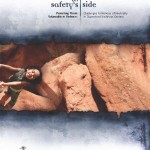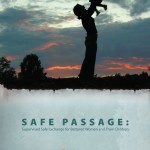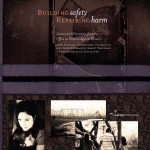The following materials address supervised visitation and safe exchange in the context of domestic violence. They were developed between 2002 and early 2010 as part of Praxis’s partnership with the Office on Violence Against Women and the National Council of Juvenile and Family Court Judges, to provide training and technical assistance to Supervised Visitation Program grantees.
On Safety’s Side – Protecting Those Vulnerable to Violence: Challenges to Notions of Neutrality in Supervised Visitation Centers
Martha McMahon and Ellen Pence
 Visitation centers have argued that “putting kids first” requires neutrality in the “conflict” between the parents. But this position frequently puts adult victims of violence in unnecessary competition with their children for protection. The outcome can be harmful and contrary to the visitation centers’ intentions in adopting a stance of neutrality. This paper examines the practice of neutrality in relation to the protection of children and adult victims of ongoing abuse.
Visitation centers have argued that “putting kids first” requires neutrality in the “conflict” between the parents. But this position frequently puts adult victims of violence in unnecessary competition with their children for protection. The outcome can be harmful and contrary to the visitation centers’ intentions in adopting a stance of neutrality. This paper examines the practice of neutrality in relation to the protection of children and adult victims of ongoing abuse.
Engage to Protect: Foundations for Supervised Visitation and Exchange – Discussion Papers
Engage to Protect is a five-part training series developed for technical assistance providers in the OVW Supervised Visitation Program. The accompanying background papers on each subject are available here.
Recognizing and Understanding Battering
Ellen Pence and Jane Sadusky
Engaging with Battered Women in Supervised Visitation
Maren Hansen-Kramer, Julie Tilley, Beth McNamara, and Jane Sadusky
Engaging with Men Who Batter in Supervised Visitation
Maren Hansen-Kramer, Julie Tilley, Beth McNamara, and Jane Sadusky
Informing the Practice of Supervised Visitation
Melanie Shepard, Jane Sadusky, and Beth McNamara
Crafting Policies that Account for Battering
Ellen Pence and Jane Sadusky
Safe Passage: Supervised Safe Exchange for Battered Women and Their Children
Jane Sadusky
Safe exchange has often been overshadowed by attention to supervised visitation, yet remains one of the most challenging aspects of a visitation program’s work. This paper sums up key issues in safe exchange and presents strategies to address them.
New Perspectives on Supervised Visitation and Safe Exchange: Orientation
Jane Sadusky
 A visitation program is one of the few community agencies to interact with each member of a family. It is likely to be the only agency that has ongoing weekly or other regular contact with everyone and as such it has much potential to protect children and adult victims of battering and to help parents who batter begin to repair the harm they have caused. The first call or appointment and the kind of welcome that each person receives influence everything that happens from that point forward. This paper provides an overview of a shift in the practice from agency-centered intake to person-centered orientation as a framework for welcoming mothers, fathers, and children to the experience of supervised visitation.
A visitation program is one of the few community agencies to interact with each member of a family. It is likely to be the only agency that has ongoing weekly or other regular contact with everyone and as such it has much potential to protect children and adult victims of battering and to help parents who batter begin to repair the harm they have caused. The first call or appointment and the kind of welcome that each person receives influence everything that happens from that point forward. This paper provides an overview of a shift in the practice from agency-centered intake to person-centered orientation as a framework for welcoming mothers, fathers, and children to the experience of supervised visitation.
Building Safety, Repairing Harm – Lessons and Discoveries from the Office on Violence Against Women’s Safe Havens: Supervised Visitation and Safe Exchange Grant Program – Demonstration Initiative
Jane Sadusky
As part of the Safe Havens: Supervised Visitation and Safe Exchange Grant Program, the Office on Violence Against Women developed and implemented a multi-year Demonstration Initiative to examine promising practices and take a sustained look at supervised visitation and safe exchange in the context of battering and other forms of domestic violence. It selected four demonstration sites to carry out this work: Santa Clara County, California; the City of Chicago, Illinois; the City of Kent, Washington; and the State of Michigan. This report presents the initiative’s collective and individual examination of visitation center practices, community partnerships, cultural accessibility, security, and sustainability.
![]() Building Safety, Repairing Harm Part 1
Building Safety, Repairing Harm Part 1
![]() Building Safety, Repairing Harm Part 2
Building Safety, Repairing Harm Part 2
![]() Building Safety, Repairing Harm Part 3
Building Safety, Repairing Harm Part 3
![]() Building Safety, Repairing Harm Part 4
Building Safety, Repairing Harm Part 4
Demonstration Initiative Site Profiles and Safety and Accountability Audit Reports
As a participant in the Safe Havens: Supervised Visitation and Safe Exchange Demonstration Initiative, each demonstration site was required to conduct community-based assessments, utilizing the methodologies of the Praxis Safety and Accountability Audit. Through their assessments, the demonstration sites explored four essential questions related to the design and delivery of visitation and exchange services.
State of Michigan: What is the role of a supervised visitation center?
South Bay Area, CA: How can the work of a visitation center produce safety for everyone involved?
City of Chicago, IL: How does a visitation center account for peoples’ unique cultures and identities?
City of Kent, WA: How does a victim of battering who might benefit from supervised visitation services identify and access them?
Guiding Principles for the Safe Havens: Supervised Visitation and Safe Exchange Grant Program, Office on Violence Against Women
Prepared by the National Council of Juvenile and Family Court Judges
The Guiding Principles were designed to guide the development and administration of Supervised Visitation Program centers in their efforts to centralize safety for adult and child victims of domestic violence. The Guiding Principles look beyond the visitation setting to address how communities funded under the Supervised Visitation Program should address domestic violence in the larger community.

